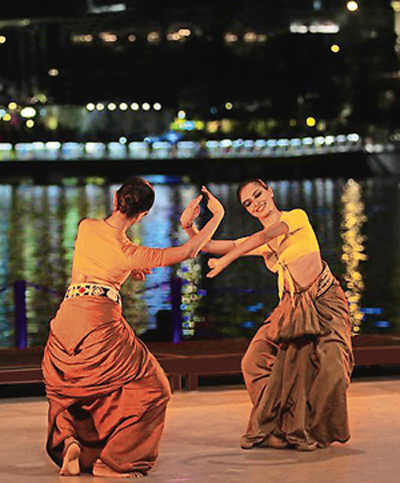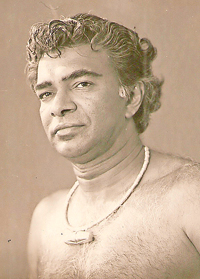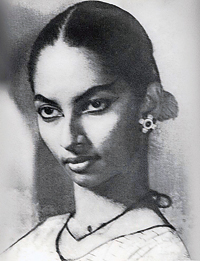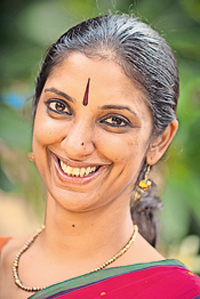The Chitrasena legacy: Inspiring story at the Design Festival

Chitrasena dancers:Changing with the times but in step with tradition. Pic by Mani Vannan
In a world overrun with disasters of all kinds, including a global pandemic, it is important now more than ever that the arts and culture of a country remain resilient. The arts restore balance in a world that is often disrupted when the focus is only on economic development.
Heshma Wignaraja, Artistic Director at the Chitrasena Dance Company, has always held the belief that it is the arts and the aesthetics of a particular country that define its soul and its people and make it unique.
It is in this spirit that the Chitrasena Dance Company, one of Sri Lanka’s oldest and most prestigious traditional dance schools, will be presenting a segment at the Sri Lanka Design Festival 2021 to be held from January 15-17.
This will take the form of a documentary titled ‘The Same River Twice’ featuring Heshma as well as the Manager of the Chitrasena Dance Company, Umadanthi Dias. The film will reflect on the ephemeral and energizing nature of dance, the call to artistic excellence, and the continuous struggle to preserve Sri Lanka’s traditional art forms while innovating for contemporary audiences.
Based on the company’s creative journey spanning over 75 years, the documentary will also focus on the life of Guru Chitrasena and his legacy, and how it has been carried forward.
Though Heshma acknowledges that 30 minutes is a very brief time span to tell their story, they hope to build inspiration and draw attention to the possibility of losing an aspect of our indigenous arts in the current context of development.
Quite simply: dance as we know it today would not be what it is if not for the pioneering efforts of Chitrasena and Vajira. It was through their efforts that traditional dance was rediscovered, preserved and appreciated in new ways in a post-independence country.

Trailblazers: Chitrasena and (below) Vajira
Starting out in the 1930s, Chitrasena faced resistance and ridicule for portraying “native dances” on stage. Some traditional gurus refused to pass on their knowledge to him as he was an ‘outsider’ – not of a parampara family of traditional dancers or drummers
Despite the many barriers, Chitrasena pursued his passion with single-minded dedication. With his background in theatre and deep immersion in both Sri Lankan ritual dance traditions and Indian classical dance, he was able to identify the elements in our rituals that could be refined and presented in a compelling manner on stage.
Together with Vajira as his partner, they broke down barriers and blazed a trail of innovation within the traditional dance forms. Their groundbreaking contributions to the art included establishing the female dancer in a dance form that was previously exclusively performed by males – which is now considered the norm. They also created a whole new genre, the Ceylonese Ballet, which brought in meaningful expression and storytelling to the dance.
Together, they took Sri Lanka to the world through dance. The Chitrasena Dance Company they established in 1943 went on to become the country’s foremost cultural ambassadors.
Their journey spurred by the pure love of dance inspired two more generations to follow in their footsteps.
 Heshma, the eldest granddaughter of Chitrasena and Vajira, was brought up in an atmosphere of dance, drums, chants, rituals, and music, that has quietly shaped her and defined her in many ways. Studies in dance theatre in America strengthened that connection and appreciation, and finding ways to keep these ancient art forms “fresh and exciting without making a mockery of it” was a challenge she was more than willing to take.
Heshma, the eldest granddaughter of Chitrasena and Vajira, was brought up in an atmosphere of dance, drums, chants, rituals, and music, that has quietly shaped her and defined her in many ways. Studies in dance theatre in America strengthened that connection and appreciation, and finding ways to keep these ancient art forms “fresh and exciting without making a mockery of it” was a challenge she was more than willing to take.
It is this passion and respect for those who came before them that drives them now, while celebrating this journey through the lens of the Chitrasena Dance Company and the Chitrasena Kalayathanaya. “I hope aspiring designers, creatives and artistes will be able to absorb some of the lessons from a 75-year journey in the arts that is still continuing,” says Heshma.
In terms of preserving these traditional art forms, Heshma believes it is the lack of proper support and the recognition of how to respectfully present and nurture the traditional art forms and artistes of Sri Lanka that forms the crux of the struggle. There is a large gap in terms of awareness on the history of Sri Lanka’s traditional dance and art forms and this also has a lot to do with the way traditional dance is being presented or seen, she adds.
With more commercial ways of presenting traditional art forms in the country today, with artists encouraged to dial it down to a souvenir culture, “Everyone is looking for self-gratification, a quick fix and easy money, and this has resulted in the slow death of these art forms,” says Heshma.

Heshma: Keeping the dance alive. Pic by Pieter Vanderbeeken
As living art forms, these 2500-year-old dance forms are bound to change and evolve. Therefore, it is the responsibility of the practitioners to help these art forms live through a particular time. But they need to be financially supported. As in the past, artists must have patrons, and must be allowed to practise their craft constantly.
All these challenges make the Chitrasena Dance Company’s mission to nurture genuine traditional artistes and help them to re-establish a respectable place in society, just like Guru Chitrasena did, an uphill task. But they aim to continue this legacy by building on their solid foundation of artistic principles, and the firm belief that there can be no compromise to artistic excellence.
“Chitrasena’s guiding philosophy was that “the new is but an extension of the old”, and we continue to learn and observe from our rituals and the gurus in developing new movement and work,” says Heshma.
The segment can be accessed on Sunday, January 17 from 1 p.m. to 2 p.m. To register, visit www.srilankadesignfestival.lk/register


